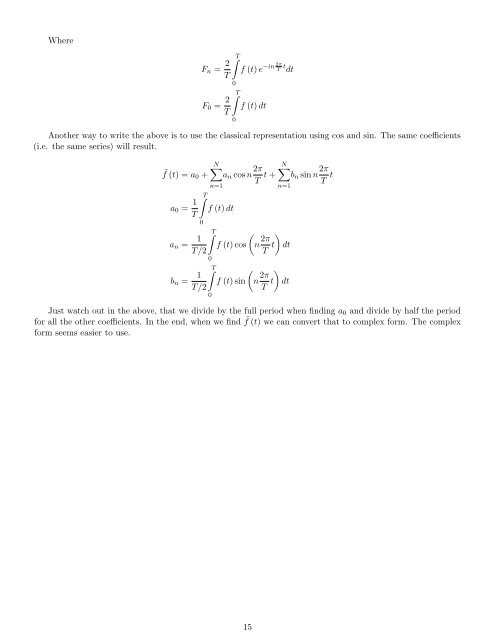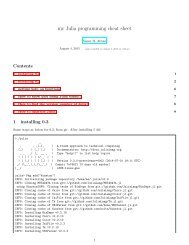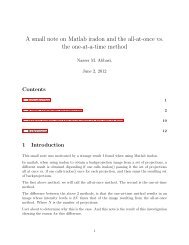You also want an ePaper? Increase the reach of your titles
YUMPU automatically turns print PDFs into web optimized ePapers that Google loves.
Where<br />
F n = 2 T<br />
F 0 = 2 T<br />
∫ T<br />
0<br />
∫ T<br />
0<br />
2π<br />
−in<br />
f (t) e T t dt<br />
f (t) dt<br />
Another way to write the above is to use the classical representation using cos and sin. The same coefficients<br />
(i.e. the same series) will result.<br />
˜f (t) = a 0 +<br />
a 0 = 1 T<br />
n=1<br />
∫ T<br />
0<br />
a n = 1<br />
T/2<br />
b n = 1<br />
T/2<br />
N∑<br />
a n cos n 2π N T t + ∑<br />
b n sin n 2π<br />
T t<br />
f (t) dt<br />
∫ T<br />
0<br />
∫ T<br />
0<br />
n=1<br />
(<br />
f (t) cos n 2π )<br />
T t dt<br />
(<br />
f (t) sin n 2π )<br />
T t dt<br />
Just watch out in the above, that we divide by the full period when finding a 0 and divide by half the period<br />
for all the other coefficients. In the end, when we find ˜f (t) we can convert that to complex form. The complex<br />
form seems easier to use.<br />
15





